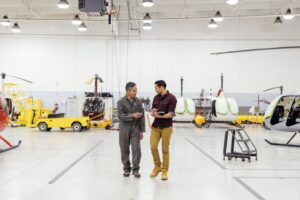What’s next in your smart city evolution?

For most cities, becoming a smart city is no longer a question. It’s an imperative. Your city is likely well underway on its digital transformation journey. You’ve been investing in IT for years. And you’re looking to get the most out of those investments. So what’s next in your smart city evolution?
For many of the municipalities our CityNext team works with, it’s connecting everything. City leaders are looking to weave the fabric of a connected society. Ultimately, they want to bring together local and national governments with commercial businesses so that all systems are working together to improve urban experiences and citizens’ quality of life.
And they’re getting there step by step. Together with our partners, we help them navigate those steps in the context of their technology continuum.
That continuum often started sometime in the 80s, when individual city departments purchased their own on-premises, siloed solutions. Then came the 90s and the internet, which enabled cities to use webpages and portals that could present data from across departments in a singular view. But the data wasn’t really connected—it was just a presentation layer over those myriad, siloed systems.
The 2000s first brought the cloud, which made it easier to connect systems and data. Then it brought the Internet of Things (IoT) with sensors and devices—generally referred to as “the edge”—for everything from detecting water quality, to tracking hyper-local weather patterns, to enabling self-driving cars.
Now, with the intelligent cloud and intelligent edge, cities can enable connections not just centrally through the cloud, but on the edge. By that, I mean rather than data having to go to the cloud to be processed and then sent back out to an edge device, data can be connected and analyzed on and between edge devices.
In other words, rather than an autonomous car having to send a message to the cloud and wait for a response to acknowledge a red light and stop, the car and the traffic light can communicate with each other directly.
So for many cities, using the intelligent cloud and intelligent edge to start connecting everything is how they’re taking that next step in their smart city evolution. That way, they can enable cohesive experiences and computing capabilities wherever data exists. It’s also vital to helping them get the most out of advanced analytics and emerging technologies such as artificial intelligence (AI).
In fact, connecting data across departments and organizations’ systems and edge devices is one of the key recommendations in Gartner’s report: “Three Rules When Using AI to Add Value to Your IoT Smart Cities.”
Read the report to learn the three rules and six action items Gartner recommends for your city to get the most out of IoT and AI. Gartner’s research includes real-world use cases that illustrate how the synergy of IoT and AI can help cities better serve their citizens and achieve their desired outcomes.
If you would like to learn more about smart cities, meet with Microsoft at Smart City Expo World Congress in Barcelona. Learn more about Microsoft CityNext at Smart City Expo World Congress 2018.




